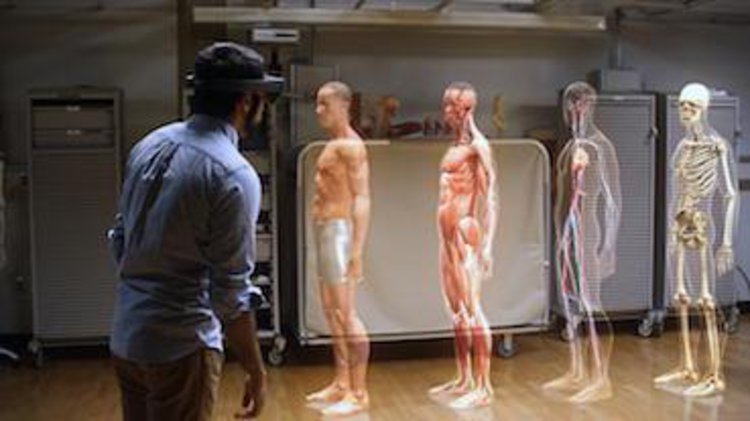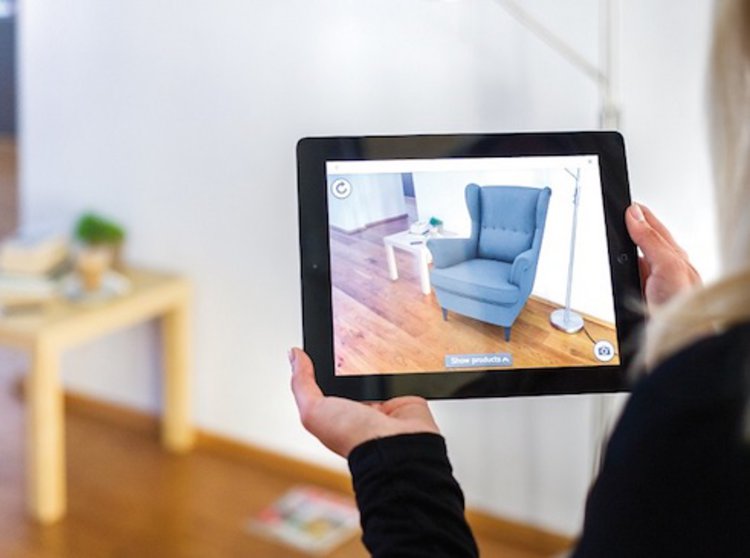Blog and News > canddi > How To Navigate Realities - Know The Technology Alphabet
How To Navigate Realities - Know The Technology Alphabet
Recently, I have been hearing a lot of buzzwords flying around relating to advanced technology with relation to sales and/or marketing. Words like Mixed Reality, Augment Reality, Virtual Reality,… What's the hype about? And more importantly, should this matter to business owners?

In a way, any business should be aware of the above. They do have their uses and they could fit in your marketing strategy. I did the workload for you, researching what each is and how it can be used for commercial purposes. In this post I am going to cover what term means; what are the potential applications in a business; and should you care about it?
So let’s take it from the top!

###Mixed reality (MR)
Definition: Mixed reality is an overlay of synthetic content on the real world that is anchored to and interacts with the real world—picture. For example, surgeons overlaying virtual ultrasound images on their patient while performing an operation. The key characteristic of MR is that the synthetic content and the real-world content are able to react to each other in real time. (adapted from http://www.foundry.com)
What is it really? In other words, in mixed reality, you can have a robot invade your office and have a science fiction gunfight breakout. It will enhance the reality you already know. You are able to interact with the digital and the physical objects. MR allows for all of that by scanning and mapping out your surrounding environment. The downside is that a headset is required.
Application: How could this be used in sales or marketing? Alex Kipman calls it the future of computing and communication. It will be a way of reaching prospects who are not immediately accessible. Others believe that MR will lead to the website being browsed through the headsets with products in 3D so that a customer can view them in more detail. It will give way to more options and opportunities for engagement with the target audience.
In sales, a real-time conversation about a particular part of a product will take place with the 3D projection available for immediate reference. In marketing, the benefits will be in a better design of products, websites, targeted ads, etc. Marketing and sales will transform from telling the customer about a product to actually showing them the product through MR.
MR will become another method of collecting more data about customers - capturing key insights into their behaviour, like interaction rates to help drive key sales figures.
Verdict: Mixed reality is making baby steps from its Augmented Reality parent. Yet, with Microsoft working on its version of mixed reality and Apple thought to be close behind, MR can serve well in experiential marketing. It can be a new method of connecting with customers to build and maintain relationships. In my opinion, it can be used for both, service and product providers.

###Augmented reality (AR)
Definition: Augmented reality is an overlay of content on the real world, but that content is not anchored to or part of it. The real-world content and the computer-generated content are not able to respond to each other. In other words, you cannot interact with content in augmented reality. (courtesy of http://www.foundry.com)
Augmented Reality and Mixed reality tend to get interchanged quite often. Here is the difference - in Augmented Reality there are superimposed images that you can’t interact with (as in Pokemon Go - you can’t pet a Pokemon in AR, it won’t react), whereas in Mixed Reality you have holographic technology that can be interacted with (ie redesigning the banister going down your staircase). Moreover, there is a massive bonus to AR that the other realities don’t have - it does not require a headset. All that is need is a smartphone.
Application: AR could revolutionize sales strategy as customers will be able to engage with products in a new innovative way. It will help customers view the products in their setting as they are making their buying decision. New IKEA sofa in your living room? No problem! An image will be generated and transplanted into the living room. But it’s not only applicable to the comfort of one’s home. As AdAge puts it:
“…imagine walking down a well-stocked grocery aisle and seeing only foods that are sugar-free or that fit your new keto diet…
Once again, companies will be able to collect a variety of data (length of looking at something, past purchase history,…) that will help with sales funnel optimization as well as marketing strategies and engagement.
Verdict: Augmented reality is already used on the market by the likes of IKEA, Lego and more. Generally, it is receiving a positive feedback from users. Augmented reality might be worth considering for businesses that sell products rather than services.

###Virtual Reality (VR)
Definition: A realistic three-dimensional image or artificial environment that is created with a mixture of interactive hardware and software, and presented to the user in such a way that any doubts are suspended and it is accepted as a real environment where you can interact with your surroundings in a seemingly real or physical way. (adapted from http://www.realitytechnologies.com/virtual-reality)
Virtual reality takes you to the world of Oz. Quite literally. And if that’s your marketing strategy then that’s the way to go! What you need to consider, however, is the investment in both software that will generate the environments as well as the hardware (a headset).
Application: When it comes to VR, marketing is more likely to benefit from it on a larger scale instead of sales. One such example can be with Estate agents - an interested prospect will be given the opportunity to walk through a property without physically needing to visit it. It can be applied in the pre-appointment stage or it can replace the viewing appointment altogether. Arguably, according to www.thenextweb.com, VR could lead to increased sales because prospects are immersed in an environment that can be rendered to exactly correspond with reality, resulting in a greater emotional connection.
Verdict: VR is a great way of engaging its target audience and creating a connection with them like never before. Marketing can unleash its creative potential, rendering environments they know will be to their prospects’ preference. The only downside is that to take full advantage of this system, you would need to consider investing in the best of the best (the likes of HTC, Oculus,…). If a business has high-value products, it might be a worthy expense.
All of these mentioned above are in one way or another benefit to the business. Whether selling a product or services, the uses are almost unlimited and in today’s world, they offer a new avenue to engage with your target audience. It is up to every single business to decide for themselves which technology would fit their business model the best.
Which of these realities do you think suits your business?